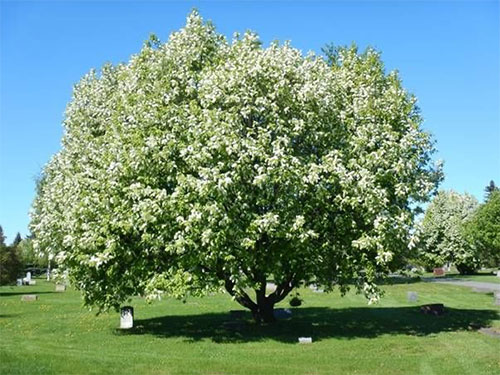
Grants available to help choke off chokecherry trees in Alaska
March 07, 2021
The USDA Forest Service and the Alaska Division of Forestry are offering grants to local governments and non-profit organizations to remove two types of invasive chokecherry trees from Alaska.
Both Prunus padus, commonly known as European bird cherry (EBC), chokecherry, or mayday trees, and Prunus virginiana, commonly known as Canadian red, or chokecherry, were originally introduced in Alaska as attractive, ornamental trees. However, each has since been deemed an invasive species with the potential to significantly affect native ecosystems in Alaska. “While chokecherry trees are a springtime favorite of many Alaskans for their beautiful and aromatic blossoms, they are becoming what some ecologists call ‘rogue ornamentals,’ “said Jim Renkert, manager of the Division’s Community Forestry Program. “The pretty tree in our yards has gone feral in Alaska greenbelts and parks. In many areas it is aggressively outcompeting our native species and changing the habitat.” Now rapidly invading riparian and natural forest areas in Fairbanks, the Matanuska- Susitna Borough, the Municipality of Anchorage, the Kenai Peninsula Borough, and Juneau, Prunus padusis especially aggressive and poses several different hazards:
The grants are offered to help recipients identify and remove prominent stands of these two Prunus species from Alaska, and to train additional certified pesticide management consultants and applicators. Approximately $200,000 is available in grants of up to $25,000 each. Grants will be awarded to applicants with knowledge and commitment to removing Prunus species from their communities. The application deadline is April 9, 2021. Additional information is available in the request for proposals and grant application forms at http://forestry.alaska.gov/community/grants
Edited By Mary Kauffman, SitNews
Source of News:
|
||||
